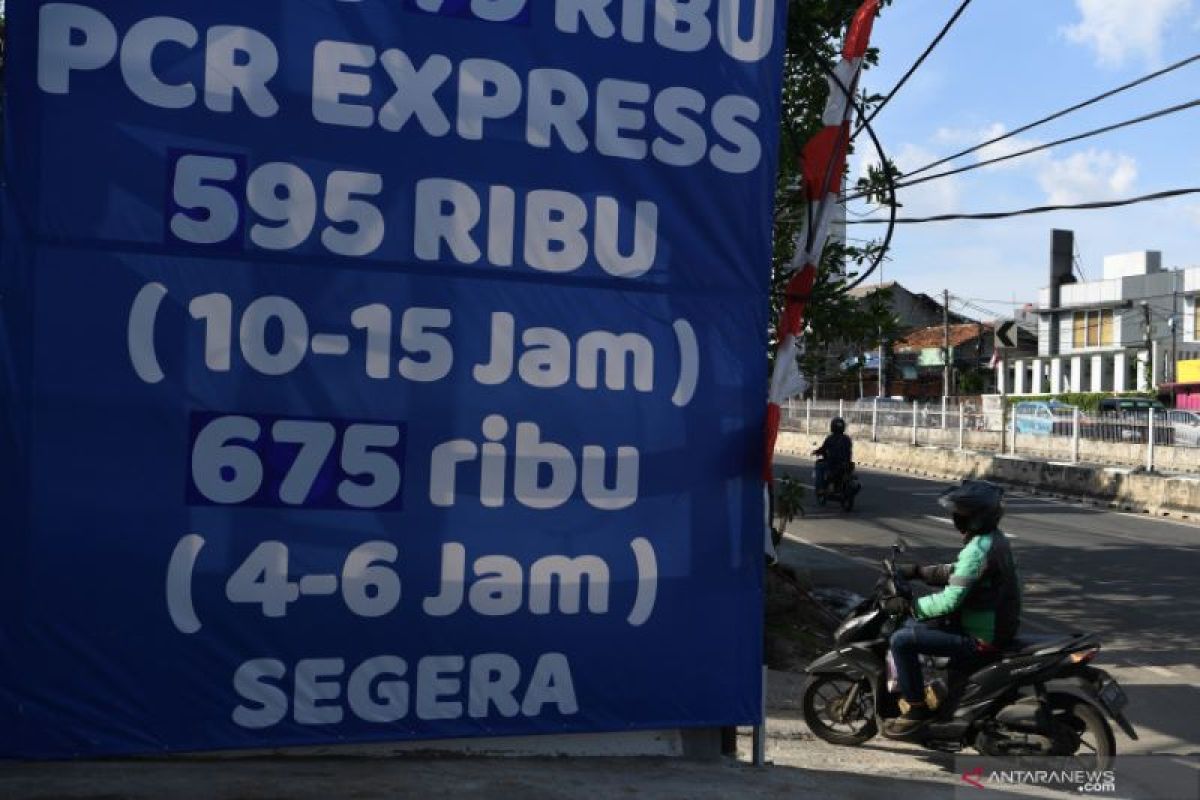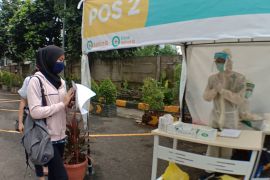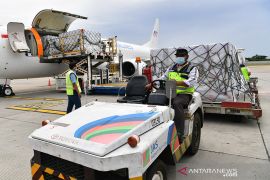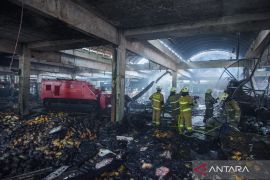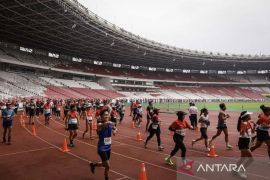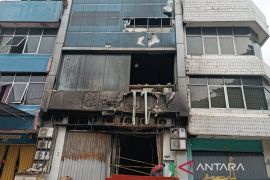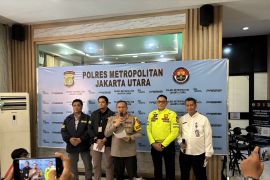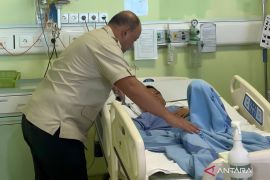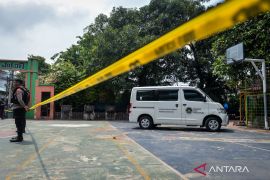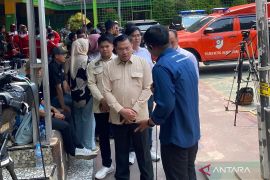This scene played out from June this year to the end of July as 140 referred hospitals for COVID-19 patients were stretched to their full capacity.
The hospitals were overwhelmed by the sheer number of COVID-19 patients. Beyond the hospital doors, sirens of ambulances could be heard day and night as they picked up patients to drive them either to other hospitals or their final resting place.
The ambulance drivers' fatigue was anticipated with the supply of trucks, which could carry up to eight bodies. But, it was only a contingency if the situation worsened.
Thankfully, it remained one. The plan was never executed on account of the decline in the death toll.
There has been a consistent decline in new cases in Jakarta in the past few weeks. Currently, the bed occupancy rate in hospitals has fallen significantly.
The same trend has been witnessed in isolation centers and self-isolation spaces, which are mostly filled with asymptomatic patients. Even those showing symptoms have rather mild infections.
The second wave
Governor Anies Baswedan admitted that Jakarta's 140 hospitals had collapsed during the second wave of COVID-19 in July 2021.
At the beginning of the second wave, everyone was racing against time as new cases spiked, he recalled.
Patients outnumbered health facilities, and even though more beds were added to boost the number of beds to 11 thousand from the initial 6 thousand, hospitals were still stretched way beyond their capacities, he said.
At one point during the second wave, the number of daily cases reached 14 thousand. During the peak of the second wave, on July 16, 2021, Jakarta recorded 113 thousand active cases, Baswedan said.
This is why it is important to prevent new cases and active cases from emerging, he added. The healthcare capacity is already limited, and breaching that limit spells doom, leading to the collapse of healthcare facilities.
Though it was difficult at first, the COVID-19 surge in Jakarta was successfully suppressed through the enforcement of various policies.
One of the policies was that of emergency community activity restrictions, which was then extended as level 4 community activity restrictions.
At present, there has been a considerable decrease in terms of healthcare facilities' load, with the total bed occupancy rate of all the referral hospitals in Jakarta pegged at 33 percent and ICU occupancy rate at 59 percent.
Some unoccupied hospital chambers or rooms are currently catering to non-COVID-19 patients thanks to the decline in cases.
The decline in hospital workloads has been reflected by the decrease in their COVID-19 death count as now hospitals can give their best service to their COVID-19 patients.
At present, the number of COVID-19 burials has come down to 40-50 per day, which is a huge drop compared to the initial phase of the second wave.
From mid-June 2021, COVID-19 burials skyrocketed. The peak was reached on July 10, 2021, with about 400 bodies buried with health protocols per day.
Burials were performed for patients who had been confirmed COVID-19 positive and patients who had died prior to receiving their PCR test results.
Meanwhile, the number of deaths among confirmed COVID-19 patients reached up to 200 per day.
Declining trend
Several stakeholders worked tirelessly to suppress the COVID-19 surge, and succeeded in doing so.
The emergence of new cases is dependent on the rate of the deadly virus' spread. The highest addition of cases occurred on July 12, 2021, when 14 thousand new cases were reported in Jakarta. A month later, there has been a significant decline in COVID-19 cases.
According to data from the Jakarta Health Office, as of Friday (August 13, 2021), the bed occupancy rates at COVID-19 referred hospitals had gone down to 33 percent, with ICU occupancy rates pegged at 59 percent.
From a total of 10,028 available beds for isolation, at least 3 thousand were occupied, while 917 of the 1,562 ICU beds were occupied.
There was also a noticeable decline in active cases by 428. The figure brought the active case tally in Jakarta down to 9,453.
On July 16, 2021, Jakarta recorded a total of 113,137 cases, the highest since the pandemic struck. It added 1,210 cases, making the total cases of COVID-19 in Jakarta 837,897.
Currently, the COVID-19 positivity rate in Jakarta is 8.1 percent, a decrease from 10.2 percent noted last week. The World Health Organization has recommended that ideally, the figure should be just under 5 percent.
It is apparent that the Jakarta provincial government is aiming for WHO's ideal number judging from the number of PCR tests performed every week.
Tests
A week ago on Saturday (August 7, 2021), Jakarta's positivity rate stood at 10.2 percent. That week, 129,008 residents had taken the PCR test.
This week there has been a decrease in the number of people undergoing the test to 116,330. Since the COVID-19 cases have declined, the need to conduct tests has also reduced.
Although the number of PCR tests has gone down, it is still high since 11 out of one thousand residents are being tested every week. The figure is higher than WHO's recommendation of testing one out of every one thousand people.
On Saturday (August 14, 2021), 18,151 people took the PCR test, data has shown.
The percentage of positive cases of COVID-19 is the ratio of people who are detected positive compared to the number of people who are tested. A high positivity rate is an indication of the severity of the COVID-19 pandemic in an area.
The current condition is starkly different from when the second wave of COVID-19 hit, which had pushed the positivity rate to the extreme of 48 percent.
Red Zone no longer
Deputy Governor of Jakarta, Ahmad Riza Patria, has said that Jakarta has finally emerged out of the red zone status after one and a half months, thanks to the decline of COVID-19 spread and transmission.
The number of rukun tangga (RT) in the red zone is only seven, 349 RTs are in the orange zone, and 24,011 RTs are already green. Jakarta, overall, is in the green zone, he informed.
Based on data from the website corona.jakarta.go.id, 6,006 RTs currently fall into the vulnerable zone category, with just seven RTs remaining in the red zone (where there is high risk of COVID-19 transmission).
The data on the website was recorded for August 10 to August 16, 2021. Earlier, there were 38 RT in the red zones.
An area is declared a red zone if it records confirmed positive cases in more than five houses in a week.
From August 10 to August 16, red zones have been recorded in South Jakarta and East Jakarta. In East Jakarta, there are four red zone RTs, namely RT 006 RW 003, Cibubur village, RT 002 RW 001 Kramat Jati village, RT 011 RW 005 and RT 007 RW 003 Susukan village.
South Jakarta's red zones comprise RT 006 RW 006 and RT 004 RW 005, Ciganjur village, and RT 009 RW 007, Srengseng Sawah village.
Patria said he is hopeful that everyone will work together to maintain and improve the condition.
Should the situation last for several weeks, then having an entire region declared a green zone will not just be a dream, he remarked.
One can say the Capital has bid adieu to its red zone status, he said. This means a lot, especially as Indonesia commemorates the 76th anniversary of its Independence Day, he added.
Related news: Tightening health protocols key to reduce COVID cases: expert
Related news: Jakarta targets two million vaccinations in 10 days
Editor: Rahmad Nasution
Copyright © ANTARA 2021
